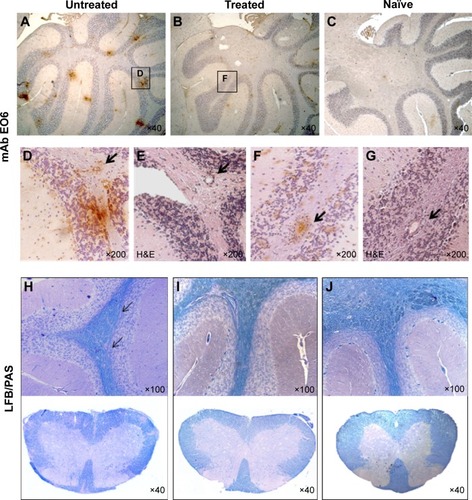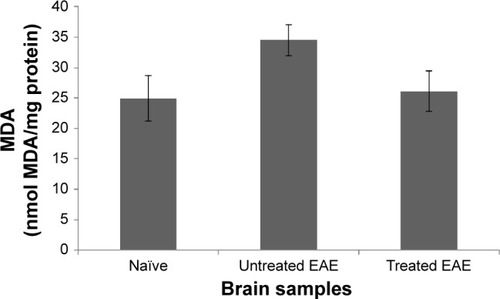Figures & data
Figure 1 Droplet size analysis.
Notes: (A) DLS results for Nano-PSO and (B) cryo-TEM image of Nano-PSO.
Abbreviations: DLS, dynamic light scattering; PSO, pomegranate seed oil; cryo-TEM, cryogenic transmission electron microscope.
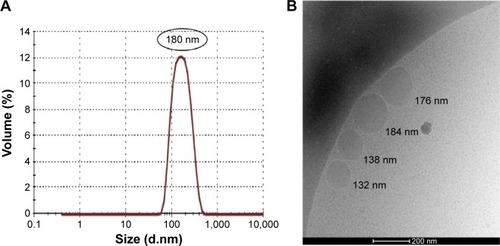
Figure 2 Nano-PSO as an α-EAE agent.
Notes: Mice were induced for EAE and treated from day 1 of the induction either with PSO or with Nano-PSO. (A) Designated EAE-induced groups were fed either with normal mouse chow (untreated group; n=10) or with chow enriched with PSO at the concentration in which 3 g (daily intake) comprises the levels designated in the figure insert: 100 (n=10) or 300 μL (n=8) PSO. P<0.05 for all PSO-treated groups versus the untreated group. (B) Designated EAE-induced groups were either left untreated or treated (by gavage) with 150 μL solution comprising 0.2, 0.8 (n=6), or 10 μL (n=7) PSO in the form of Nano-PSO. P<0.05 for 0.8 and 10 μL PSO-treated group versus the untreated group.
Abbreviations: PSO, pomegranate seed oil; EAE, experimental autoimmune encephalomyelitis.
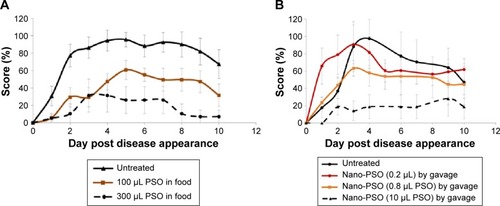
Figure 3 Individual α-EAE activity of Nano-PSO ingredients.
Notes: Mice were induced for EAE and treated from day 1 of induction (by gavage) with the reagents described in the insert of the figure (n=7 for each of the groups). Nano-PSO was administrated at a dose of 2 μL PSO per 150 μL solution. Mice were scored daily for EAE signs for 2 additional weeks. P<0.05 for the results in the Nano-PSO group versus all others.
Abbreviations: PSO, pomegranate seed oil; EAE, experimental autoimmune encephalomyelitis.
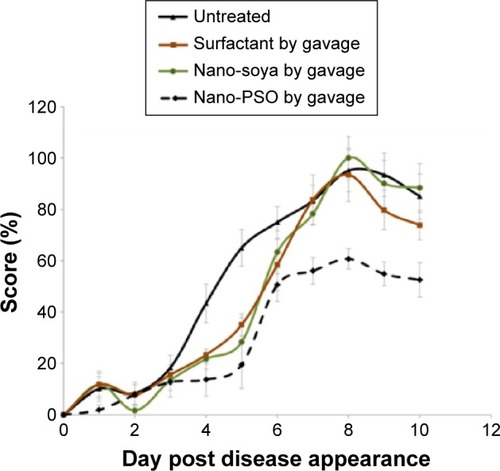
Figure 4 Nano-PSO in the prevention and treatment of EAE.
Notes: Mice induced for EAE were administered Nano-PSO in two different start points. As shown in the insert, while one group of induced mice was left untreated (n=8), a second group was treated with Nano-PSO from day 1 of the induction (n=6) and a third group from day 7 of the induction (n=7). Mice were scored daily for EAE signs for 2 additional weeks. P<0.05 for both Nano-PSO treatments.
Abbreviations: PSO, pomegranate seed oil; EAE, experimental autoimmune encephalomyelitis.
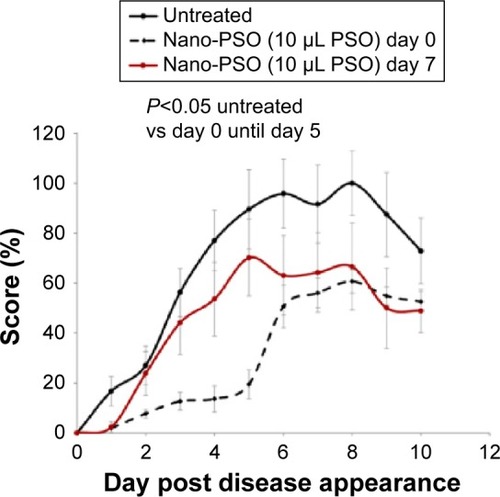
Figure 5 Small Nano-PSO particles are inactive against EAE.
Notes: Mice induced for EAE were treated with Nano-PSO in different droplet sizes. As shown in the insert, while one group of induced mice was left untreated (n=8), a second group was treated with 180 nm droplets of Nano-PSO (n=7), and a third group with 30 nm Nano-PSO droplets (n=7). P<0.05 for the untreated group versus the group treated with 180 nm droplets of Nano-PSO.
Abbreviations: PSO, pomegranate seed oil; EAE, experimental autoimmune encephalomyelitis.
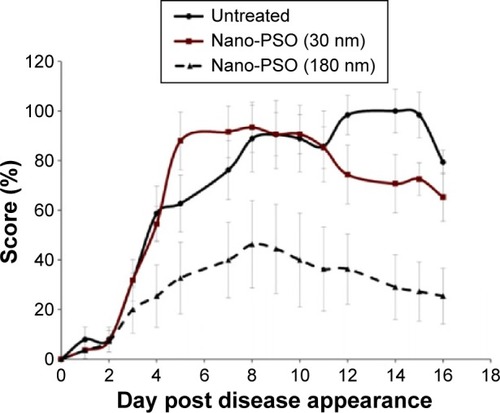
Figure 6 Pathological markers of EAE in Nano-PSO treated and untreated mice.
Notes: Nano-PSO treated and untreated mice were sacrificed 3 weeks after induction of EAE, and their formalin-fixed, paraffin-embedded brain sections as well as those of age-matched naïve mice (C and J) were stained by mAb EO6 (A–D and F), H&E (E and G), and LFB/PAS (brains and spinal cords) (H–J). (D) and (F) represent an enlargement of the squares in (A) and (B); (E) and (G) are serial sections of (D) and (F), respectively. Arrows in (D–G) indicate immune infiltrates. Arrows in (H) represent demyelinated areas.
Abbreviations: EAE, experimental autoimmune encephalomyelitis; PSO, pomegranate seed oil; mAb, monoclonal antibody; H&E, hematoxylin and eosin; LFB, Luxol fast blue; PAS, periodic acid Schiff.
